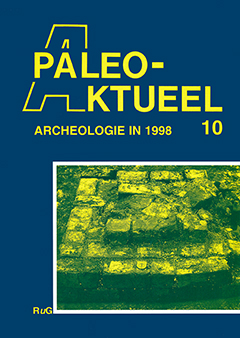DE SNELHEID VAN KLIMOP
Samenvatting
lvy is a classical indicator of temperature and for that reason the behaviour of an inidividual plant was followed for 30 years. No other ivy was growing in the study area. Flowering and seed setting happened after 20 years and wood pigeons, blackbirds and mistle thrushes carried out dispersal of the ripe seeds by leaving droppings under trees and hedges. Up to 50 seedlings per square metre were found in dark, moist and nitrogen-rich spots. In 1998 the pollen production of the mother plant amounted to about 2 billion pollen grains but the species was little if at all represented in the pollen precipitation around the plant. A sample taken directly under the ivy bush contained 16.8% pollen grains of ivy. Ten years of seed distribution have produced climbers of up to 5 m, which are still not flowering. Ivy in nature reserves, protected from grazing sheep, produces a dense ground cover of vegetative plants that after same time start to climb. The disappearance of these climbers seems to be related to animal husbandry rather than to climate change.

